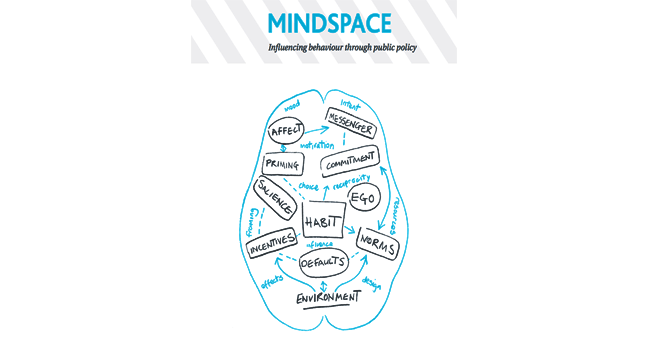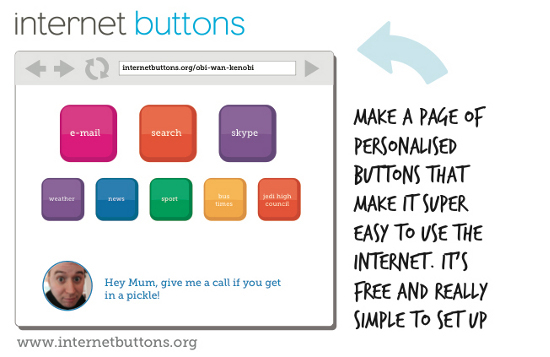Tori Flower is Creative Director of Shift (formerly We Are What We Do), a behaviour change organisation that designs products for social change. She also set the RSA Student Design Awards 'Everyday Well-being' brief in 2013-14 and 'The Daily Diet' brief this year. In a series of seven short blogs aimed at student designers released each day this week, she shares her insights into how to approach designing for behaviour change.
Tip 4: Design around behavioural insights
In my previous blogs, I discussed how to:
Identify the Outcome, Action and Actor
Identify Barriers and Motivations
Design interventions that facilitate, not communicate
What are behavioural insights?
Over the last thirty years work by psychologists and behavioural economists has helped show how the human mind works and how we make decisions. The insights generated by scholars such as Kahneman, Thaler and Sunstein are crucial for anyone designing for behaviour change, whose focus is shifting the decisions made by individuals.
There are a few useful books which are definitely worth reading. The ones I have found most digestible are:
-
Dan Ariely’s Predictably Irrational- This very accessible book examines why people make irrational decisions, such as eating more just because they are using a bigger plate. It explores possible behaviour change interventions such as a refundable deposit paid when making a doctor's appointment to decrease the numbers of no-shows and self-control credit cards, where users decide their personal spending limit and the penalty for exceeding it.
-
Thaler and Sunstein’s Nudge - a seminal book on decision making. The authors now consult for the US and UK government. They show that when we are choosing things, no choice is ever presented to us in a neutral way. For example, the arrangement of items in a cafeteria influences the choices made by customers; the default setting is always more frequently taken - think about the temperature your washing machine is automatically set at, or whether you're automatically on or off the organ donor list; and if the negative consequences of a decision are far into the future we often discount them and think more about more immediate effects on our lifestyles - as with climate change or pension saving.
-
Daniel Kahneman’s Thinking Fast and Slow - The most comprehensive study on decision making from the winner of the Nobel Prize for economics, distilling a lifetime of research. Longish, but well worth it.
These books show there are a range of influences on our behaviour, which usually work on a sub-conscious level. When you are designing your behaviour change intervention you can employ these insights to increase the likelihood of the Actor doing the Action in order to achieve the Outcome (see my first blog).
MINDSPACE

A really handy checklist containing many of these behavioural insights is the MINDSPACE report. It was written by The Behavioural Insights Team (nick-named the Nudge Unit, after the aforementioned book) to help UK government departments design more effective policies, but is handy for any designer.
Each letter stands for a different insight, e.g. M stands for Messenger, so think about who delivers the intervention - sometimes it might be good for an expert to add weight to the importance of an intervention, other times a celebrity (as in Jamie Oliver’s involvement in the school dinner campaign), other times someone similar to the target user who they can identify with. I stands for Incentives, so think about what you can offer people to encourage take up of your intervention, and how you can show what they would lose if they didn’t take it up. N stands for Norms - we are strongly influenced by what others do, so think about how you can show others are doing your Action or using your intervention, for example.
Have a read of the checklist and try applying each in turn to your work.
Examples of interventions that use behavioural insights
 When we were designing our digital inclusion tool, Internet Buttons, we thought about who should deliver the intervention and how trusted friends and family members were great people to help get older people who don’t use the internet online. We got confident internet users to create a set of personalized links to useful, simple sites for someone they know with our tool. This personal connection made the older person feel more trusting and keen to take part.
When we were designing our digital inclusion tool, Internet Buttons, we thought about who should deliver the intervention and how trusted friends and family members were great people to help get older people who don’t use the internet online. We got confident internet users to create a set of personalized links to useful, simple sites for someone they know with our tool. This personal connection made the older person feel more trusting and keen to take part.

We considered the Messenger again with our healthy fast food vans. It is important to downplay who’s behind it – the vans should look like food businesses concerned with producing tasty food, not a local government or school-endorsed healthy eating intervention.
The Behavioural Insight team drew on the Norms insight when they carried out trials involving rewriting tax reminder letters that explain most people in their local area had already paid their taxes (and in not doing so they were in the minority). In one financial year, it is estimated that the new letters helped bring forward around £210 million of tax revenue.
Designing with Intent tool kit
Another useful resource is the Designing With Intent toolkit, created by Dan Lockton. This offers 8 lenses to helping you influence behaviour through design. For example the Architectural Lense gets you to ask questions like “Can you slant things so some actions are easier than others?” or “What would happen if you took away the features you didn’t want people to use?” or “Can get people to follow the path you want them to, on the way to reaching something they want?”.
My next blog
I am going to write about how to test, iterate and improve your solutions.
>> Find out more about the RSA Student Design Awards
>> Find out more about Shift

Be the first to write a comment
Comments
Please login to post a comment or reply
Don't have an account? Click here to register.